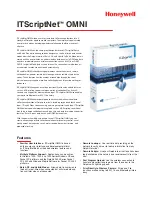
Fabric OS Administrator’s Guide
367
53-1002745-02
Modifying TI zones
12
Modifying TI zones
Using the zone
--
add command, you can add ports to an existing TI zone, change the failover
option, or both.You can also activate or deactivate the TI zone.
Using the zone
--
remove command, you can remove ports from existing TI zones. If you remove the
last member of a TI zone, the TI zone is deleted.
After you modify the TI zone, you must enable the current effective configuration to enforce the
changes.
ATTENTION
If failover is disabled, do not allocate all ISLs in TI zones. Make sure sufficient non-dedicated paths
exist through the fabric for all devices that are not in a TI zone. See
“TI zone failover”
on page 346
for additional information about disabling failover mode.
NOTE
If you have overlapping TI zones and you want to change the failover option on these zones, you must
first remove the overlapping ports from the zones, then change the failover type, and finally re-add
the overlapping members.
1. Connect to the switch and log in using an account with admin permissions.
2. Enter one of the following commands, depending on how you want to modify the TI zone.
•
Enter the zone
--
add command to add ports or change the failover option for an existing TI
zone. You can also activate or deactivate the zone.
zone --add
[
-o
optlist
]
name
-p
"
portlist
"
zone --add -o
optlist
name
[
-p "
portlist
"
]
•
Enter the zone
--
remove command to remove ports from an existing TI zone.
zone --remove
name
-p "
portlist
"
Be aware of the ramifications if you disable failover mode. See
“TI zone failover”
on page 346
for information about disabling failover mode.
3. Perform the following steps if you have any TI zones with failover disabled. If all of your TI zones
are failover-enabled, skip to
step 4
.
a. Change the failover option to failover enabled. This is a temporary change to avoid frame
loss during the transition.
zone --add -o f
name
b. Enable the zones.
cfgenable
"
current_effective_configuration
"
c. Reset the failover option to failover disabled. Then continue with
step 4
.
zone --add -o n
name
4. Enter the cfgEnable command to reactivate your current effective configuration and enforce
the TI zones.
cfgenable "
current_effective_configuration
"
Summary of Contents for Fabric OS 7.1.0
Page 1: ...53 1002745 02 25 March 2013 Fabric OS Administrator s Guide Supporting Fabric OS 7 1 0 ...
Page 24: ...24 Fabric OS Administrator s Guide 53 1002745 02 ...
Page 28: ...28 Fabric OS Administrator s Guide 53 1002745 02 ...
Page 32: ...32 Fabric OS Administrator s Guide 53 1002745 02 ...
Page 42: ...42 Fabric OS Administrator s Guide 53 1002745 02 ...
Page 132: ...132 Fabric OS Administrator s Guide 53 1002745 02 Frame Redirection 4 ...
Page 194: ...194 Fabric OS Administrator s Guide 53 1002745 02 Ports and applications used by switches 6 ...
Page 254: ...254 Fabric OS Administrator s Guide 53 1002745 02 Brocade configuration form 8 ...
Page 274: ...274 Fabric OS Administrator s Guide 53 1002745 02 Validating a firmware download 9 ...
Page 302: ...302 Fabric OS Administrator s Guide 53 1002745 02 Creating a logical fabric using XISLs 10 ...
Page 344: ...344 Fabric OS Administrator s Guide 53 1002745 02 Concurrent zone transactions 11 ...
Page 374: ...374 Fabric OS Administrator s Guide 53 1002745 02 Setting up TI over FCR sample procedure 12 ...
Page 462: ...462 Fabric OS Administrator s Guide 53 1002745 02 ...
Page 490: ...490 Fabric OS Administrator s Guide 53 1002745 02 Ports on Demand 18 ...
Page 498: ...498 Fabric OS Administrator s Guide 53 1002745 02 Supported topologies for ICL connections 19 ...
Page 626: ...626 Fabric OS Administrator s Guide 53 1002745 02 Preparing a switch for FIPS B ...
Page 630: ...630 Fabric OS Administrator s Guide 53 1002745 02 Hexadecimal Conversion C ...
Page 666: ...666 Fabric OS Administrator s Guide 53 1002745 02 ...
















































